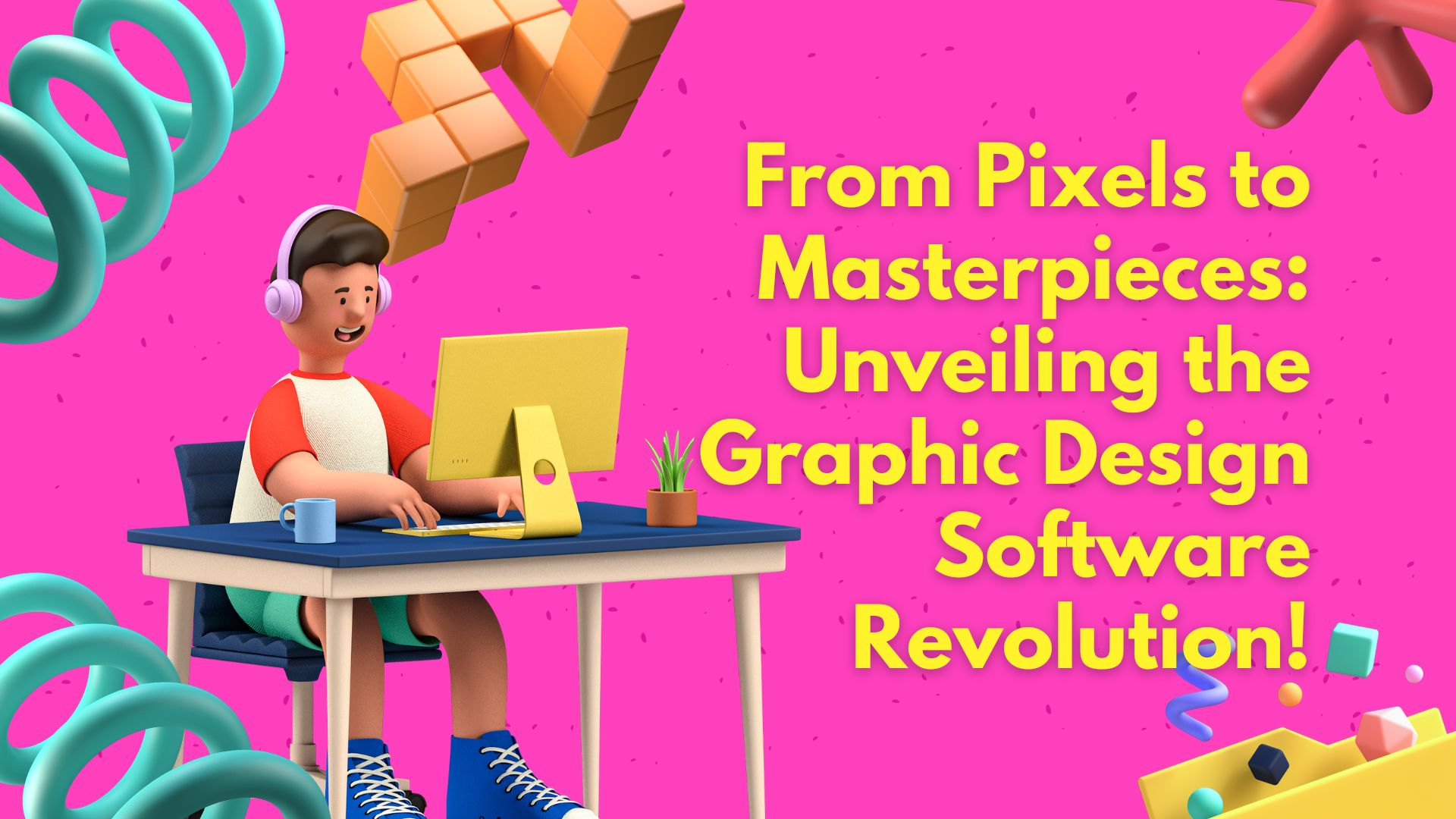 Introduction:
Introduction:
In an increasingly digital world where visual communication reigns supreme, graphic design software stands as the catalyst for unleashing creativity and shaping the visual landscape of our times. From the earliest days of pixelated graphics to the sophisticated tools of today, the evolution of graphic design software mirrors the relentless march of technological progress and the boundless ingenuity of human creativity.
In this comprehensive exploration, we embark on a journey through the annals of graphic design software, tracing its evolution from humble beginnings to its current status as a powerhouse tool for artistic expression and visual communication. We’ll delve into the pivotal moments, groundbreaking innovations, and transformative impacts that have shaped the trajectory of graphic design software, illuminating the rich tapestry of creativity and innovation that defines this dynamic field.
—
In the expansive realm of digital creativity, graphic design software stands tall as the conduit through which artistic visions are brought to life. From humble beginnings to cutting-edge innovations, the journey of graphic design software is a testament to the boundless potential of human creativity and technological advancement. Join us as we embark on a captivating exploration of this evolution, tracing its trajectory from its nascent stages to the sophisticated tools that define modern design practices.
The Dawn of Digital Design
The roots of graphic design software can be traced back to the emergence of digital computing in the mid-20th century. As computers became increasingly accessible, designers began to explore the potential of these machines as tools for creative expression. Early pioneers such as Ivan Sutherland, who developed Sketchpad in 1963, laid the groundwork for interactive computer-aided design (CAD) systems, introducing concepts such as graphical user interfaces and object manipulation that would shape the future of graphic design software.
From Pixels to Paint: The Rise of Raster-Based Editing
The 1980s heralded a new era of graphic design with the introduction of raster-based editing software. Programs like Mac Paint and Adobe Photoshop revolutionized the way images were created, edited, and manipulated, paving the way for digital artistry to flourish. With the ability to work with individual pixels, designers gained unprecedented control over their compositions, unleashing a wave of creativity that transcended the limitations of traditional media.
Vector Graphics and Precision Design
While raster-based editing dominated the digital landscape, another revolution was quietly brewing in the realm of vector graphics. Programs like Adobe Illustrator and CorelDRAW introduced designers to the concept of scalable, resolution-independent graphics, empowering them to create crisp, clean visuals that could be resized and manipulated without loss of quality. From logo design to typography, vector graphics software became the go-to tool for precision design work, offering unparalleled flexibility and versatility.
Desktop Publishing and Print Revolution
The advent of desktop publishing in the 1980s brought graphic design software into the mainstream, democratizing access to professional-quality design tools and laying the foundation for the desktop publishing revolution. Programs like Adobe PageMaker and QuarkXPress empowered designers to create stunning layouts for print media, from newspapers and magazines to brochures and advertisements. With the ability to combine text, images, and graphics in a digital environment, desktop publishing software revolutionized the publishing industry and transformed the way information was disseminated.
Multimedia and the Birth of Interactive Design
As the internet gained popularity in the 1990s, graphic design software evolved to meet the demands of the digital age. Multimedia authoring tools like Macromedia Director and Adobe Flash enabled designers to create interactive experiences for the web, from animated banners and interactive presentations to immersive multimedia websites. With the rise of broadband internet and advancements in web technologies, interactive design became an essential skill for designers looking to make their mark in the digital landscape.
The Age of Digital Photography and Photo Editing
The proliferation of digital cameras in the early 2000s revolutionized the field of photography and gave rise to a new generation of photo editing software. Programs like Adobe Lightroom and Capture One offered photographers powerful tools for organizing, editing, and enhancing their digital photos, ushering in an era of digital photography that would redefine the boundaries of visual storytelling. From amateur enthusiasts to professional photographers, photo editing software became an indispensable tool for anyone looking to unlock the full potential of their digital images.
The Rise of User-Centric Design Tools
In recent years, the focus of graphic design software has shifted towards user-centric design tools that prioritize simplicity, accessibility, and collaboration. Platforms like Canva and Figma offer intuitive interfaces and cloud-based workflows that make it easy for designers of all skill levels to create stunning visuals and collaborate with team members in real-time. With drag-and-drop functionality, pre-designed templates, and built-in collaboration tools, these platforms are democratizing access to design tools and empowering individuals and businesses to bring their creative visions to life.
The Future of Graphic Design Software
Looking ahead, the future of graphic design software is filled with exciting possibilities. Advancements in artificial intelligence, augmented reality, and virtual reality are poised to revolutionize the way designers create and interact with digital content. From AI-powered design assistants that help streamline the creative process to AR-enabled design tools that blur the lines between the digital and physical worlds, the next generation of graphic design software promises to push the boundaries of creativity and redefine the way we think about design.
Conclusion: Embracing the Evolution of Graphic Design Software
In conclusion, the evolution of graphic design software is a testament to the transformative power of human creativity and technological innovation. From its humble beginnings to its current state as a sophisticated tool for visual expression, graphic design software has revolutionized the way we create, communicate, and interact with the world around us. As we look to the future, the possibilities are limitless, and the journey of graphic design software continues to inspire and captivate designers around the globe. So whether you’re a seasoned professional or an aspiring designer, embrace the evolution of graphic design software and unleash your creative genius on the world stage.






